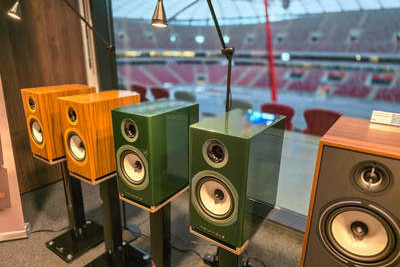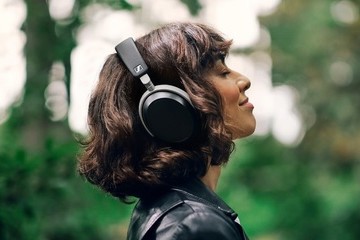U kent ze wel, de test CD/LP`s waarvoor de tracks zo uit een archief zijn geplukt. De inmiddels welbekende firma "STS Digital" werkt echter op een compleet andere manier. STS Digital gebruikt uitsluitend opnames die speciaal voor deze test-CD/LP`s zijn gemaakt.

De keuze voor deze tracks is gebaseerd op een vijftal klankmatige aspecten, te weten;
1. De warme klank,
die akoestische instrumenten van zichzelf hebben, maar heel vaak niet door geluidstechnici worden overgenomen. STS Digital hecht veel waarde aan deze warme klank en bereikt dit met koolstofkabels en kwaliteits microfoons en AD-convertor.
2. De akoestische plaatsing en herkenning van de uitvoerende muzikanten in de opnameruimte,
haalbaar door het STS-3 en het STS-6 opnamesysteem. STS vindt met name de horizontale en verticale resolutie in een opname belangrijk.
3 .De fase-reinheid van een opname,
zowel de elektrische fase (goede kabelverbindingen etc) als de akoestische fase is uitsluitend te bereiken door juiste plaatsing van de microfoons, wat heel goed te controleren is op een gesloten hoofdtelefoon of met een fasemeter.
4. De symmetrie in de opname,
dat betekent altijd de microfoons zo plaatsen dat zowel links als rechts een gelijke signaalverdeling onstaat en geen mono-steunmicrofoons overdreven links en rechts zetten. Deze verstoren de symmetrische klank en geven klankpieken die niet overeenstemmen met de totale akoestiek van de ruimte.
5. Doorzicht en helderheid in een opname,
dat betekent niet een overdreven scherpe opname, maar een zacht van klank zijnde heldere opname, waar vooral de opnameruimte 3-dimensionaal wordt neergezet.
Na vele, zeer populaire, reference CD`s en SA-CD`s komt STS Digital met een referentie LP op 180 grams vinyl. High Fidelity Discs heeft deze unieke LP nu al in haar collectie (naast alle eerdere uitgaven van STS Digital) Wilt u meer informatie, of wilt u deze LP bestellen? Klik dan hier.
Aanvullende informatie:
How we created our ultimate reference
Now and then you get a chance to realise a High-Ender’s dream. The recording of your ultimate reference. A recording people in shops and exhibitions use as a reference for other recordings and to test the quality of their costly set-ups. It is the recognition a sound engineer will cherish. It is the first step on the ladder to become part of the legendary recordings like Miles Davis’ Kind of Blue and Jazz at the pawnshop. We aimed for a very straightforward approach. The shortest electronic path possible, a very good acoustic enviremont and if possible everything recorded in one take. As we only had one day to do the whole recording everything had to coincide and yes, we were lucky, all went well and as planned. What we were striving for was tot try to create a recording in the atmosphere of the legendary Rudi van Gelderen but with the technology of today. Ambience mikes were of course a vital element in this. Because of this, one thing was obvious. It meant the production of a vinyl record. Now I’m not much of a vinyl man but I must admit that after listening to this record on some top class high end gear I now understand what the analogue record lovers experience when they play their stuff. Really an uncanny mixture of music and emotion. On the 23rd of October we arrived at Wisseloord Studio’s and set up our equipment in Studio 2. Never underestimate the influence of a true clean 230 mains and absolute phase on the mains cables. Therefore we switched of every neon light in the vicinity. Connected our Powerlab mains filter block and Powerlab mains cables to the equipment, switched it on and let it warm up for an hour or so. The microphone cables were all Silltech XLR HF-9-93 and all interlinks were of the same type. The Schoeps mikes were the obvious choice for the grand piano, the snare and the ambience. For bass, kick, sax and cymbals we used the CAD 300 with the big membrane. The recorder was the Tascam 78 HR and the mixer the Soundcraft LM1. The drums were mixed down though an Eela Audio mixer. No limiting, no compression, no eq just the straight signal. In our reference room 3 we mixed the 8 tracks down on a Mackie VLZ 1642 to the Weiss converter connected to a Marantz CDR 640. Monitoring was on LUA loudspeakers From this master we produce the disc-at-once which was then shipped to Maarten de Boer at The Masters in Soest, ourMastering Engineer.
Fritz de With
Cutting the disc
As this was going to be a high-end record I had to set the whole system up for high-end performance. Normally it is set up for Dance and that means level not bandwidth. The feedback of the cutterhead was set to 12 dB to obtain a frequency response of ( 0.5 dB from 20Hz to 23 kHz. The disc was played back with a Weiss DA converter set to 24 bit / 88,2 kHz and of course limiters, compressors and De-essers were all out of the signal path. I use Ortofon cutterheads and Ortofon cutting amps with all transformers bypassed. After the cut the master lacquers awaiting transport were put in the fridge to avoid loss of high frequencies. At the factory the lacquers were immediately processed again to avoid loss of high frequency content. It was a pleasure indeed to participate in the production of this record. An absolute relief between all the noise of Dance and Disco.
Mastering and cutting by Maarten de Boer, The Masters



